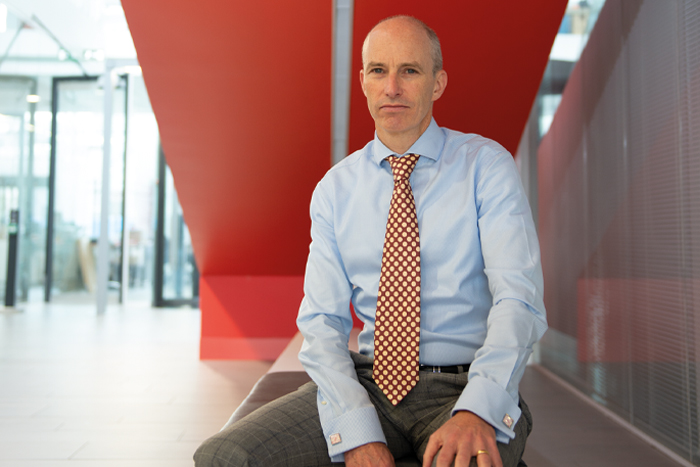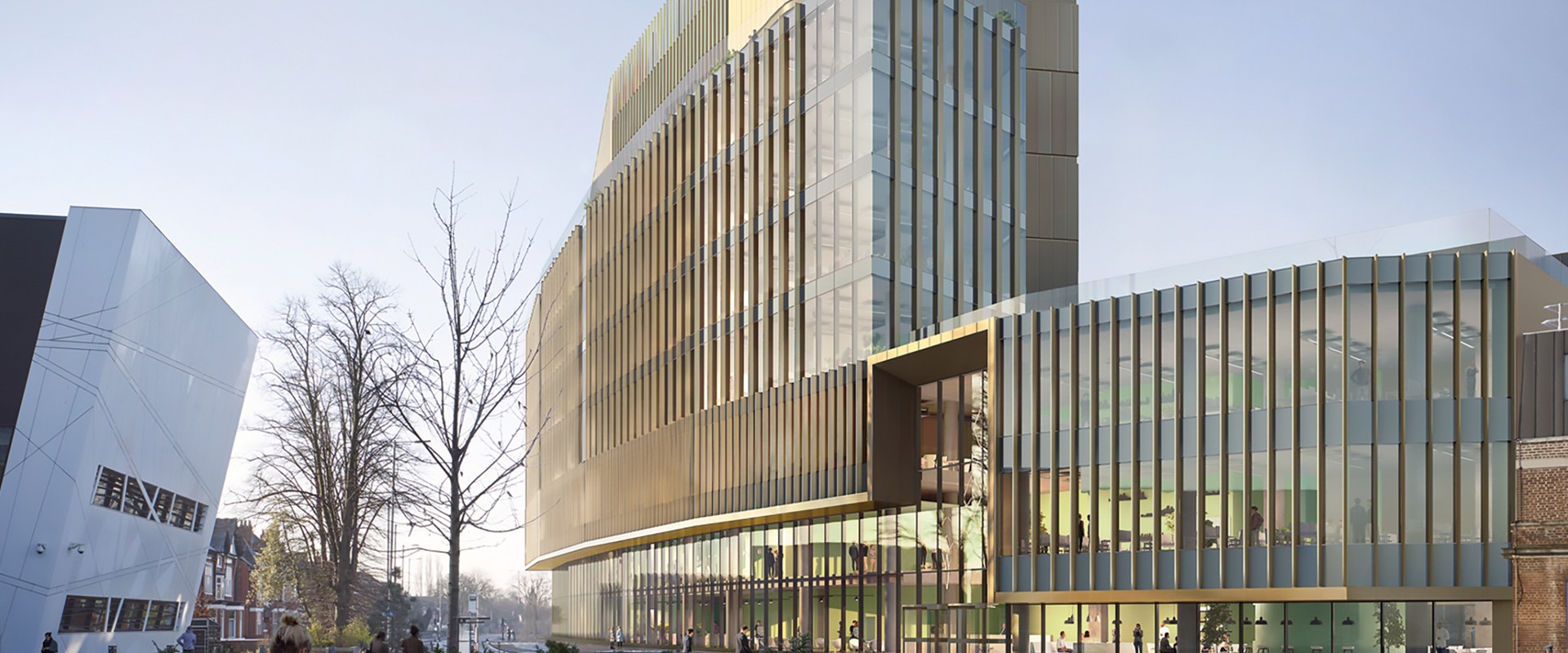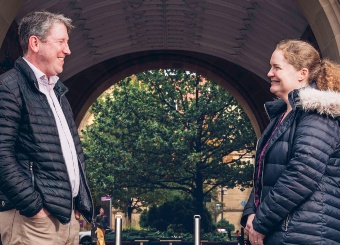The Paterson Building is set to become the new home of life-changing cancer discoveries.
Once complete, the facility will house Europe’s largest concentration of scientists, doctors and nurses, working collaboratively to innovate groundbreaking research and pioneering treatments.
Construction of the £150 million research facility, supported by gifts from the University’s international community of alumni and friends, is taking place on the site of the original building, which was tragically damaged in a fire in 2017.
Re-imagining the ecosystem
The space will bring together scientists and experts working across fields, including data, AI, physics and biological sciences, in open-plan workspaces to foster ideas generation and collaboration. This, along with labs and clinics in close proximity to one another; the Oglesby Cancer Research Building (the home of researchers working under the Manchester Cancer Research Centre) across the road; and The Christie Hospital (Europe’s largest single-site cancer centre) next door, will make translating discoveries into clinical practice easier and more efficient.
At the forefront of innovation
The University of Manchester has a proud track record of pioneering cancer innovations, including the first clinical use of tamoxifen for breast cancer and helping to establish the UK’s first proton beam therapy centre.
What we’re doing in the laboratory, it’s cell culture – which in principle anybody can do. The difference is we’re doing it very well.
One such innovator working at the forefront of future-defining research is Professor Stephen Taylor, who is leading the team responsible for developing a biobank of ovarian cancer cells to support the creation of new therapies for advanced ovarian cancer.
This rapidly developing disease offers limited treatment options, meaning survival rates haven’t substantially improved for 20 years. The pandemic exacerbated the problem, delaying early detection. Effective, targeted treatment for ovarian cancer is needed now more than ever.
A biobank allows scientists to understand the biology and genetics of a group of cells and how they change or respond to drugs. They are widely used in cancer research, but Taylor’s is a little different. This biobank is alive.
“The problem with most tissue biobanks is that in order to create them, the samples are preserved by either being dropped in formaldehyde or frozen. Both these methods fix and kill the samples, so the tumour that we are studying is technically dead,” Taylor explains.
Creating a living, moving biobank that tracks the cancer cell’s journey is giving the team real-time insights into tumour changes and revealing that while they may look similar genetically, no two cells are the same.
By replicating each tumour’s environment in the lab, the cells mirror those of the patient and act as a perfect model to understand treatment reactions and what will work for the patient. The most exciting aspect of this new approach? The potential to understand why a particular sample might be resistant to a drug, Taylor says. “That could be a game changer.”

Professor Stephen Taylor
Manchester’s success is its people and their commitment to making a positive impact.
Transforming cancer futures
The Paterson’s position next to Europe’s largest cancer treatment hospital will give researchers like Taylor access to hundreds more clinical samples from patients. It’s this access to multiple samples from the same patient during their treatment journey that allows the team “to track the evolution of their disease in response to the treatments they have received. This is key because if the tumours start to develop drug resistance, we can see where and when it starts, understand why and do something about it,” explains Taylor.
The Manchester research community’s boundary-pushing outlook isn’t limited to addressing national cancer issues. In partnership with the Kenyan government, researchers are also looking to identify the genomic differences in prostate cancers of African and European men – drawing on the ethnic diversity within the Greater Manchester population to understand how diagnosis and treatment can be improved.
Making change happen
The Paterson, The Christie Hospital and the Oglesby Cancer Research Building are set to form a powerhouse ‘cancer campus’ in the coming years. But for Taylor, the real secret to Manchester’s success is its people and their commitment to making a positive impact.
“What we’re doing in the laboratory, it is cell culture – which in principle anybody can do. The difference is we’re doing it very well. It takes a lot of effort and dedication to be the best. Anybody can kick a ball into the back of a net, but Cristiano Ronaldo is Cristiano Ronaldo.”
Find out more about the project and make a donation.




